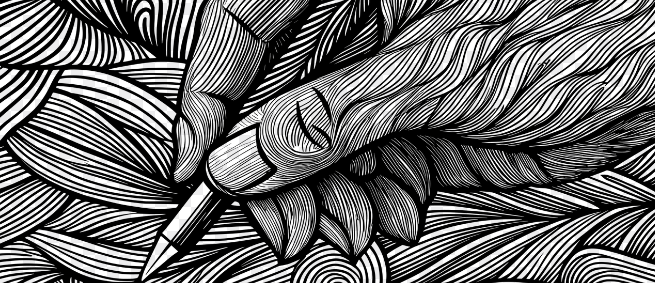Have you forgotten all the grammar you learnt in school? If so, this guide is for you! My aim is to keep it simple and free from technical terms, so that it’s a practical guide for writers.
Boring? Trust me, it’s worth spending a bit of time learning this stuff now – you’ll save yourself so many hours when it comes to editing!
The Basics
- Every time a different person speaks, start on a new line.
- Double or single speech marks? It’s more common to use single in Britain and double in the U.S. It’s up to you, though: no agent or publisher will be horrified by one over the other.
- Use a comma rather than a full stop at the end of your dialogue if it’s followed by a dialogue tag such as ‘she said.’
✅ ‘This is confusing,’ she said.
❌ ‘This is confusing.’ She said. - Punctuation goes inside the speech marks.
✅ ‘This is confusing,’ she said.
❌ ‘This is confusing’, she said. - For quotes inside dialogue, use the other type of speech mark (i.e. double if you’re mainly using single).
✅ ‘When I asked about punctuation, he told me “It’s simple,” but I’m not convinced,’ she said.
Tags and Beats
This is where a lot of people get confused, but it’s simple once you know how. First, definitions: a dialogue tag is a descriptor of when/how someone speaks, i.e. ‘he said’ or ‘she whispered.’ A beat is an action that breaks up the dialogue, such as ‘they smiled.’
In terms of punctuation, tags are considered part of the same sentence as the dialogue, so you end the dialogue with a comma even if it would be spoken with a full stop, and the dialogue tag begins with a small letter:
✅ ‘This is confusing,’ she said, ‘but I think I’m getting it.’
Even if your dialogue ends with a question mark or exclamation mark, you still start the tag with a small letter:
✅ This is confusing!’ she said.
Beats, on the other hand, are not directly related to the dialogue so they are written as separate sentences:
✅ ‘This is confusing.’ She smiled. ‘But I think I’m getting it.’
Hesitation vs. Interruption
Indicate hesitation using ellipses:
✅ ‘I’m not sure…’ he said.
If someone interrupts, use an em-dash. Most software will convert to one of these if you insert two dashes:
✅ He said, ‘I’m certain that—’
Comma Splices
So, to be fair, this is something that only total grammar trolls would notice, but I called this an ‘ultimate guide’ so I figured I’d best be thorough. Remember comma splices from school…? No, neither do I!
A comma splice is when you use a comma to link two independent clauses, instead of using a conjunction or semi-colon, e.g.
❌ I’m great at grammar, I really like it
✅ I’m great at grammar; I really like it
✅ I’m great at grammar because I really like it
The point here is that comma splices are still wrong even if you have a dialogue tag in the middle:
❌ ‘I’m great at grammar,’ she said, ‘I really like it.’
To avoid that, either use a semi-colon or preposition as in the examples above and place the dialogue tag at the end, or make it into two separate sentences:
✅ ‘I’m great at grammar,’ she said. ‘I really like it.’

